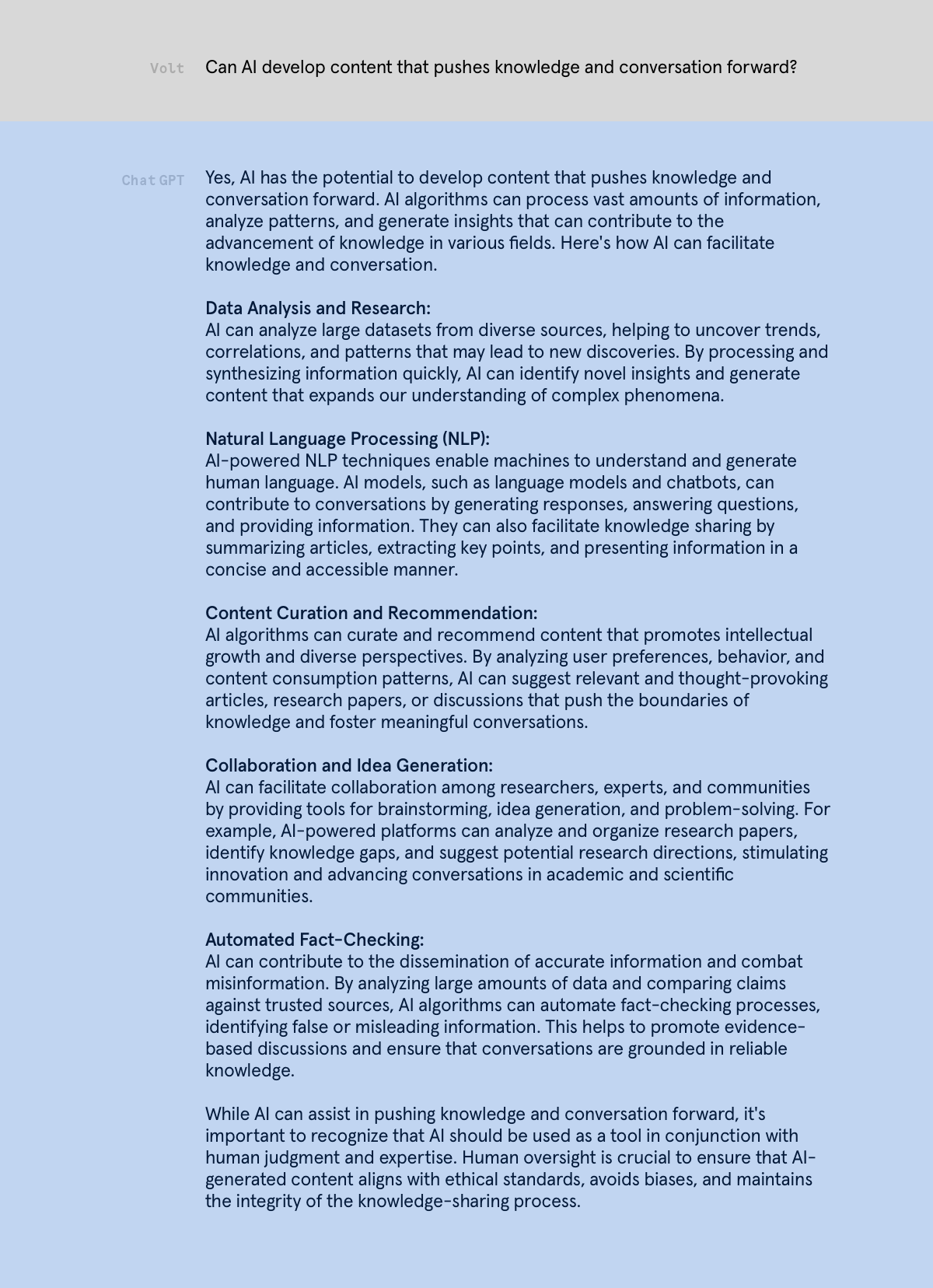Volt: Can AI develop content that pushes knowledge and conversation forward?
ChatGPT: Yes, AI has the potential to develop content that pushes knowledge and conversation forward. AI algorithms can process vast amounts of information, analyze patterns, and generate insights that can contribute to the advancement of knowledge in various fields. Here’s how AI can facilitate knowledge and conversation.
Data Analysis and Research: AI can analyze large datasets from diverse sources, helping to uncover trends, correlations, and patterns that may lead to new discoveries. By processing and synthesizing information quickly, AI can identify novel insights and generate content that expands our understanding of complex phenomena.
Natural Language Processing (NLP): AI-powered NLP techniques enable machines to understand and generate human language. AI models, such as language models and chatbots, can contribute to conversations by generating responses, answering questions, and providing information. They can also facilitate knowledge sharing by summarizing articles, extracting key points, and presenting information in a concise and accessible manner.
Content Curation and Recommendation: AI algorithms can curate and recommend content that promotes intellectual growth and diverse perspectives. By analyzing user preferences, behavior, and content consumption patterns, AI can suggest relevant and thought-provoking articles, research papers, or discussions that push the boundaries of knowledge and foster meaningful conversations.
Collaboration and Idea Generation: AI can facilitate collaboration among researchers, experts, and communities by providing tools for brainstorming, idea generation, and problem-solving. For example, AI-powered platforms can analyze and organize research papers, identify knowledge gaps, and suggest potential research directions, stimulating innovation and advancing conversations in academic and scientific communities.
Automated Fact-Checking: AI can contribute to the dissemination of accurate information and combat misinformation. By analyzing large amounts of data and comparing claims against trusted sources, AI algorithms can automate fact-checking processes, identifying false or misleading information. This helps to promote evidence-based discussions and ensure that conversations are grounded in reliable knowledge.
While AI can assist in pushing knowledge and conversation forward, it’s important to recognize that AI should be used as a tool in conjunction with human judgment and expertise. Human oversight is crucial to ensure that AI-generated content aligns with ethical standards, avoids biases, and maintains the integrity of the knowledge-sharing process.










